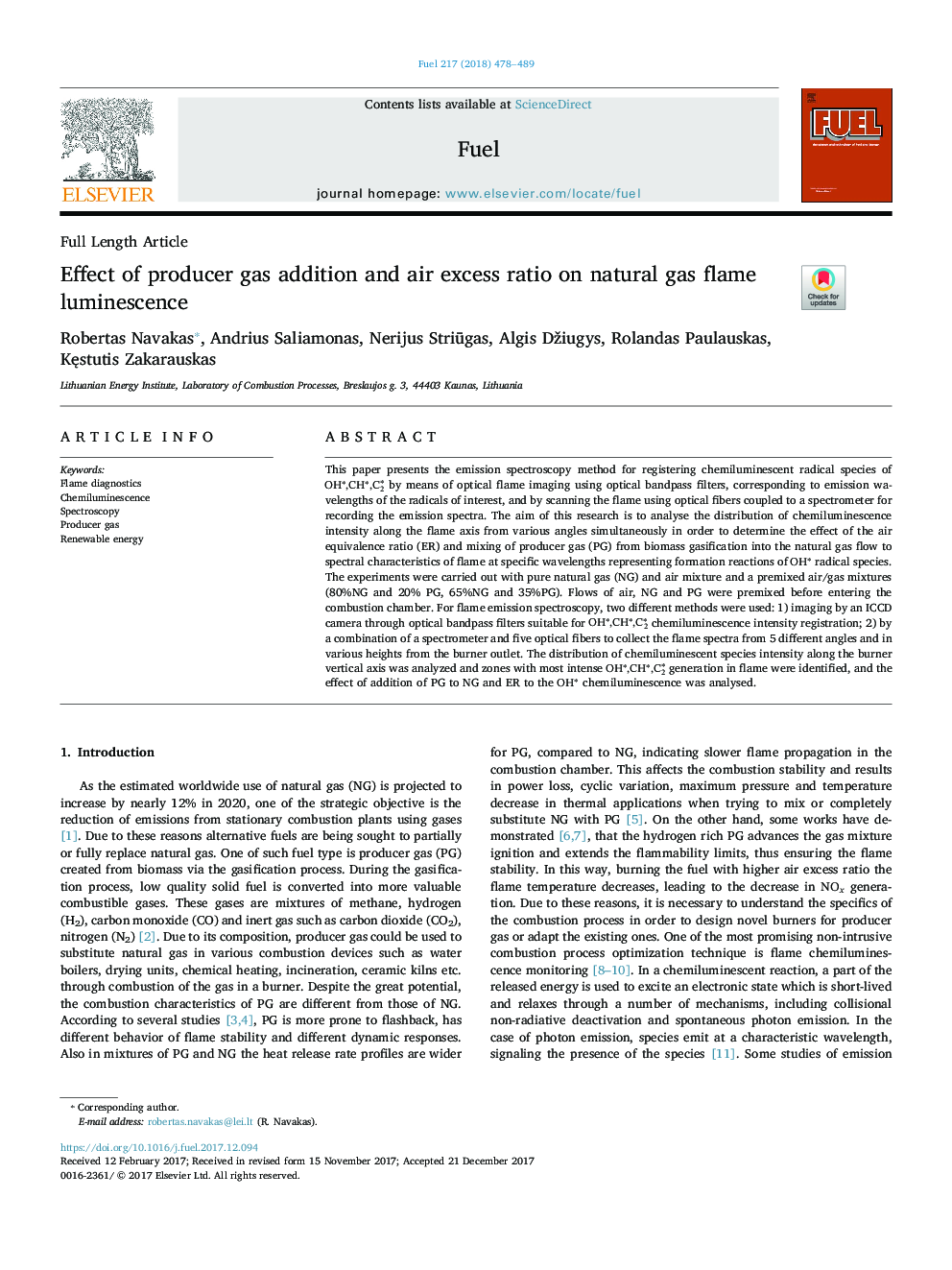| Article ID | Journal | Published Year | Pages | File Type |
|---|---|---|---|---|
| 6632095 | Fuel | 2018 | 12 Pages |
Abstract
This paper presents the emission spectroscopy method for registering chemiluminescent radical species of OHâ,CHâ,C2â by means of optical flame imaging using optical bandpass filters, corresponding to emission wavelengths of the radicals of interest, and by scanning the flame using optical fibers coupled to a spectrometer for recording the emission spectra. The aim of this research is to analyse the distribution of chemiluminescence intensity along the flame axis from various angles simultaneously in order to determine the effect of the air equivalence ratio (ER) and mixing of producer gas (PG) from biomass gasification into the natural gas flow to spectral characteristics of flame at specific wavelengths representing formation reactions of OHâ radical species. The experiments were carried out with pure natural gas (NG) and air mixture and a premixed air/gas mixtures (80%NG and 20% PG, 65%NG and 35%PG). Flows of air, NG and PG were premixed before entering the combustion chamber. For flame emission spectroscopy, two different methods were used: 1) imaging by an ICCD camera through optical bandpass filters suitable for OHâ,CHâ,C2â chemiluminescence intensity registration; 2) by a combination of a spectrometer and five optical fibers to collect the flame spectra from 5 different angles and in various heights from the burner outlet. The distribution of chemiluminescent species intensity along the burner vertical axis was analyzed and zones with most intense OHâ,CHâ,C2â generation in flame were identified, and the effect of addition of PG to NG and ER to the OHâ chemiluminescence was analysed.
Related Topics
Physical Sciences and Engineering
Chemical Engineering
Chemical Engineering (General)
Authors
Robertas Navakas, Andrius Saliamonas, Nerijus StriÅ«gas, Algis Džiugys, Rolandas Paulauskas, KÄstutis Zakarauskas,
